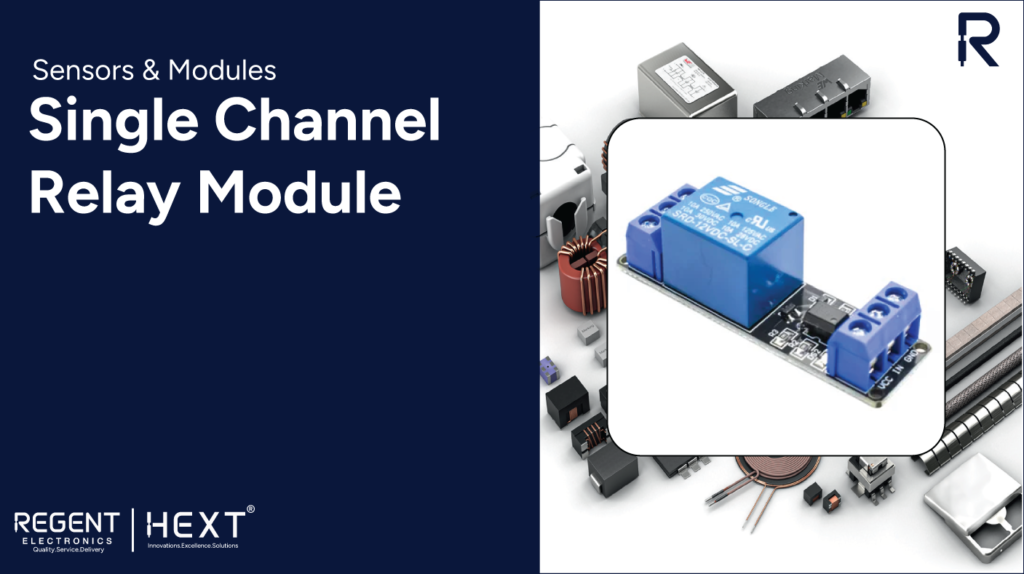
Single Channel Relay Module: A Reliable Solution for High Voltage Control
A Single Channel Relay Module is an essential component for controlling high-voltage devices such as motors, solenoid valves, lamps, and AC appliances. It provides a seamless interface between low-voltage microcontrollers like Arduino, NodeMCU, and high-power loads, making it an indispensable tool in electronics projects. At Regent Electronics, our relay modules come equipped with screw terminals for easy connections, as well as an LED indicator to show the relay’s status, ensuring user-friendly operation.
In this blog, we’ll delve into the working principle of the relay, its key components, and its numerous applications in controlling high-power devices safely.
What is a Relay Module?
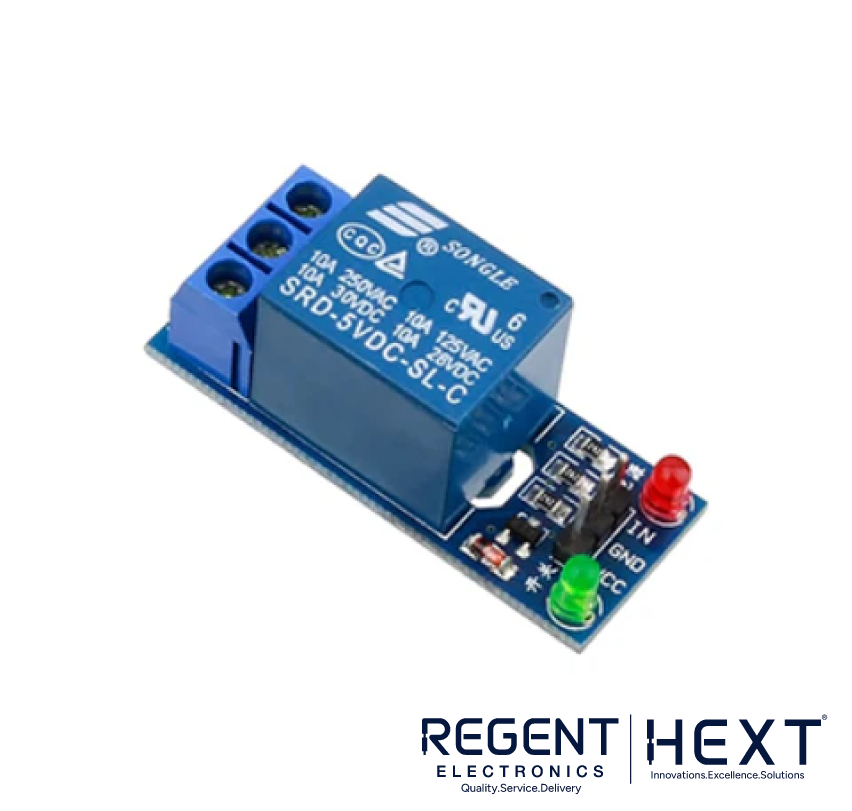
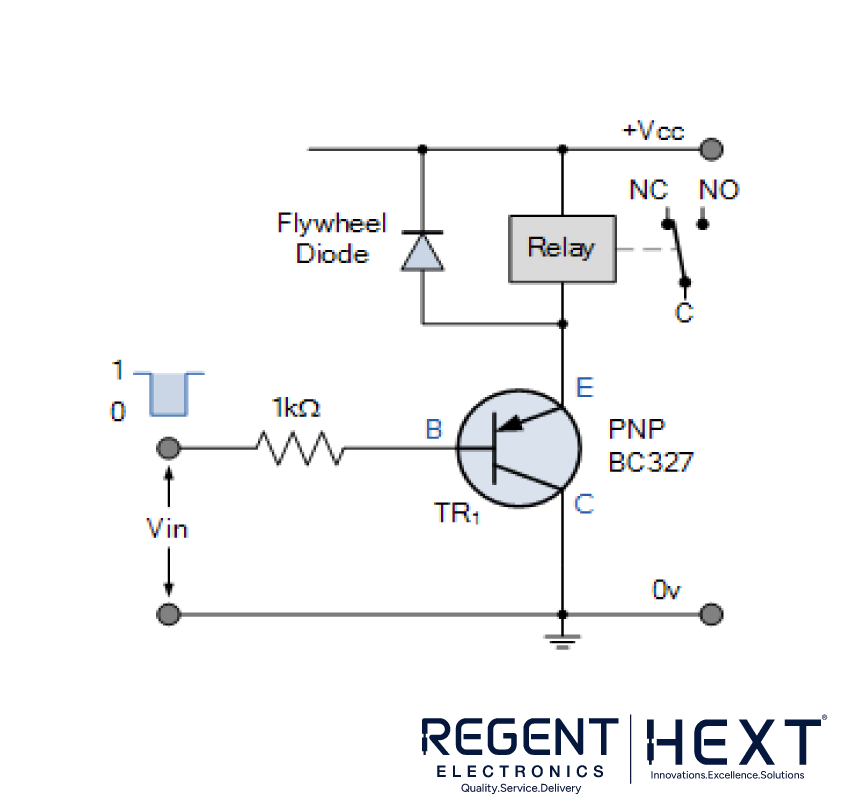
A relay module is an electrically operated switch used to control high voltage or high current devices. It consists of an electromagnet that, when activated, closes or opens the relay’s contacts, thus enabling the control of external devices like motors, solenoid valves, and other AC or DC powered equipment. It’s designed to interface with low-voltage microcontrollers such as Arduino or NodeMCU, making it easy to control large appliances using small signals.
Key Components of a Relay:
- Electromagnet: Generates a magnetic field to operate the switch.
- Movable Contact: The contact that gets moved by the electromagnet to complete the circuit.
- Switching Points: Determines whether the relay is in a normally open (NO) or normally closed (NC) state.
- Spring: Returns the contact to its default position when the electromagnet is not energized.
Relay Pinout:
- COM (Common Pin): The common connection point for the relay.
- NO (Normally Open): There is no contact between the COM pin and the NO pin when the relay is off. When triggered, the connection is made, supplying power to the connected load.
- NC (Normally Closed): The COM pin is connected to the NC pin by default, and the circuit is closed until the relay is triggered. When triggered, the circuit is opened, and the power supply is cut off from the load.
Relay Module Specifications:
- Control Signal: TTL level
- Rated Current: 10A (NO) / 5A (NC)
- Switching Voltage: 250VAC / 30VDC
- Switching Current: 10A
- Module Size: 43mm x 17mm x 17mm
- Microcontroller Compatibility: Ideal for use with 5V microcontrollers like Arduino.
Working Principle of the Relay
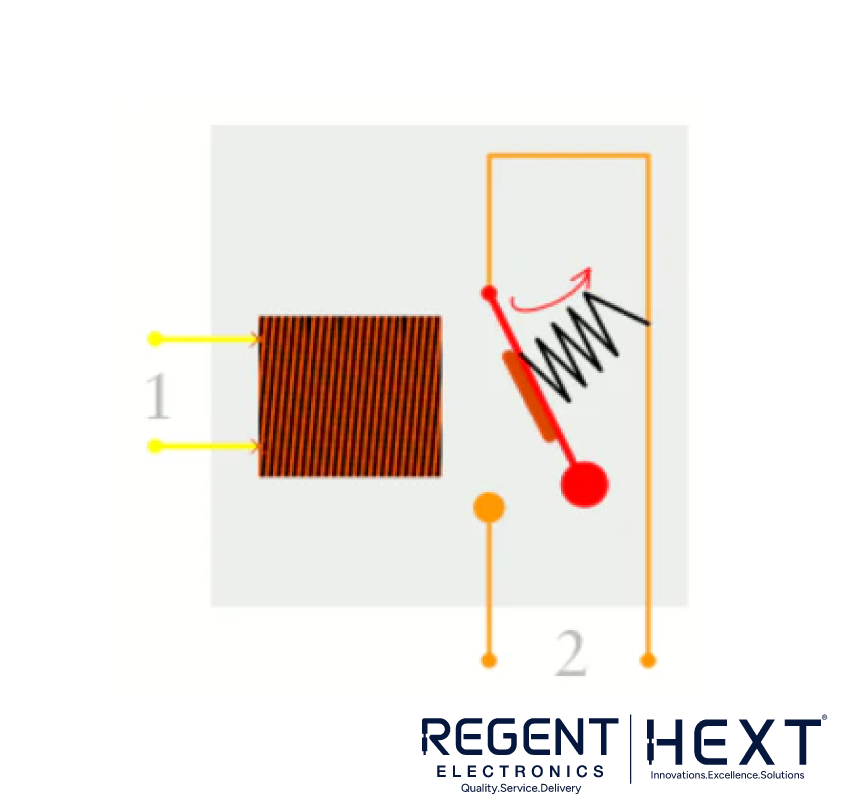
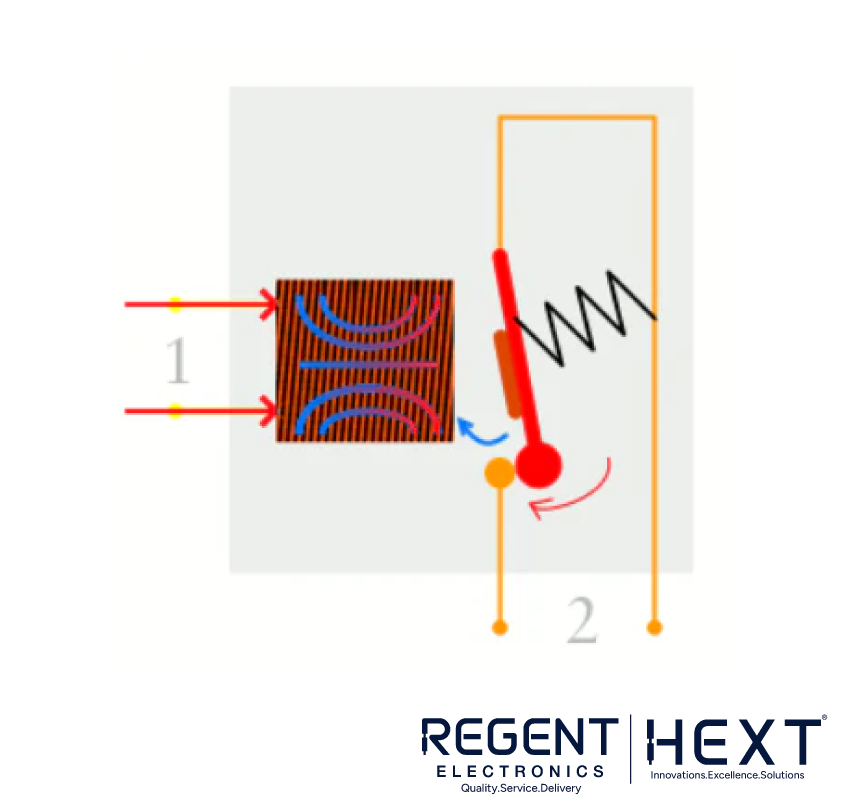
Relays operate on the principle of electromagnetic attraction. When current flows through the relay’s coil, it activates the electromagnet. The resulting magnetic field pulls a contact, either closing or opening the circuit, depending on whether the relay is normally open (NO) or normally closed (NC).
Normally Open (NO) Relay:
In this configuration, the contacts in the output circuit are not connected by default. When the input current flows through the electromagnet, it closes the contacts and allows a much larger current to pass through the output circuit, activating high-power devices like motors or lights.
Normally Closed (NC) Relay:
Here, the contacts are connected by default, allowing current to flow in the output circuit. When the electromagnet is triggered, it opens the contacts and stops the flow of current, turning off the connected device.
How Does a Relay Link Two Circuits?
A relay allows a small current in the input circuit to control a larger current in the output circuit. Here’s an example of how it works:
- Input Circuit (Blue Loop): Initially off, no current flows. The input circuit can be powered by a sensor or switch.
- Electromagnet Activation: When the input circuit is activated, it energizes the electromagnet, creating a magnetic field.
- Switching Action: The electromagnet pulls a metal bar in the output circuit, closing the switch and allowing a higher current to flow.
- Output Circuit (Red Loop): Now, a larger current flows to the connected high-power device, such as a motor or lamp, turning it on.
Applications of the Single Channel Relay Module
The Single Channel Relay Module has a wide range of applications in electronics and automation systems, including:
- Home Automation: Control appliances like fans, lights, and air conditioning units remotely using microcontrollers.
- Industrial Automation: Used to control motors, valves, or any other high-voltage industrial machinery.
- Safety Circuits: Relays are used in safety systems to trigger circuit breakers when undesirable conditions are detected.
- Motor Control: The relay can manage the switching of motors in systems like robotics or home appliances.
Why Choose Regent Electronics for Your Relay Module?
At Regent Electronics, we offer high-quality Single Channel Relay Modules that are easy to interface with popular microcontrollers like Arduino, NodeMCU, and Raspberry Pi. Our relay modules are designed for high-current handling and are ideal for controlling high-voltage loads safely and reliably. Whether you’re building a home automation project, industrial system, or DIY electronics, our relay modules provide the functionality and performance you need.
Buy the Single Channel Relay Module at Regent Electronics and start building your projects with confidence. Our relay modules help you control powerful devices using simple low-voltage signals, ensuring both safety and efficiency in your electronics projects.
Regent Electronics – Your One-Stop Shop for Electronics Components
Explore a wide range of high-quality electronics modules, sensors, and kits at Regent Electronics. Start your next project today with our reliable and affordable solutions!
